Symmetry is power. And in a European formal garden, it rules with a velvet glove.
These aren’t just backyards—they’re masterpieces in geometry. Every hedge, every gravel path, every fountain is placed with the kind of precision that would make a mathematician weep.
It’s elegance with intention. Drama without chaos.
A style born in royal courts and country estates, now waiting to transform your own outdoor space into something timeless. Ready to channel your inner Versailles?
These 15 classic elements will have you sculpting shrubs, lining pathways, and throwing side-eyes at anything that dares grow out of place.
Symmetrical Hedges
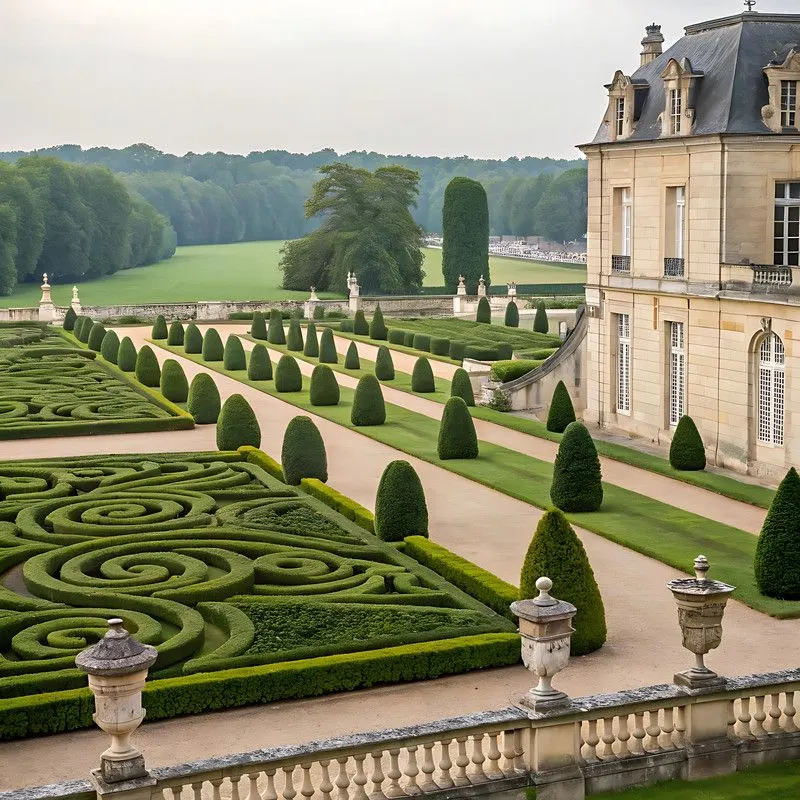
Symmetry isn’t just pleasing; it brings balance and harmony. In European formal gardens, hedges crafted with precision guide the eye and create structured pathways.
Imagine a lush green corridor directing you through a peaceful garden, the perfect marriage of artistry and nature. Creating your own symmetrical hedges can be as simple as planting boxwoods or yews.
Trim them regularly to maintain that crisp, clean look. The beauty of symmetry lies in its ability to offer a sense of calm and order, transforming any space into a serene retreat.
Topiary Sculptures
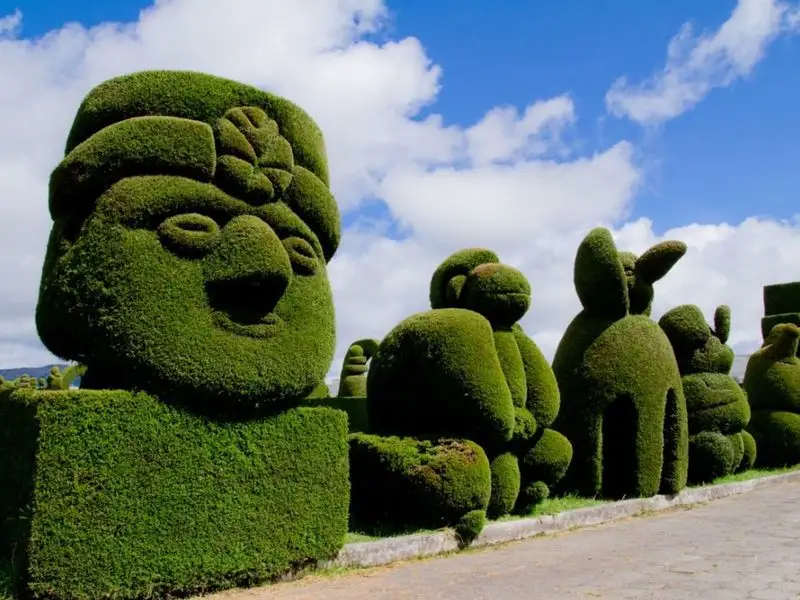
Topiary art turns shrubs into living sculptures, blending creativity with horticulture. These whimsical shapes might range from spirals to animals, adding personality to your garden.
Begin with hardy, evergreen plants like boxwood, which lend themselves to this form. Whether you’re crafting a simple sphere or an intricate peacock, a steady hand and patience are key.
Topiaries offer endless possibilities, inviting you to express your inner artist. These living statues can transform ordinary gardens into magical realms where imagination leads the way.
Formal Pathways
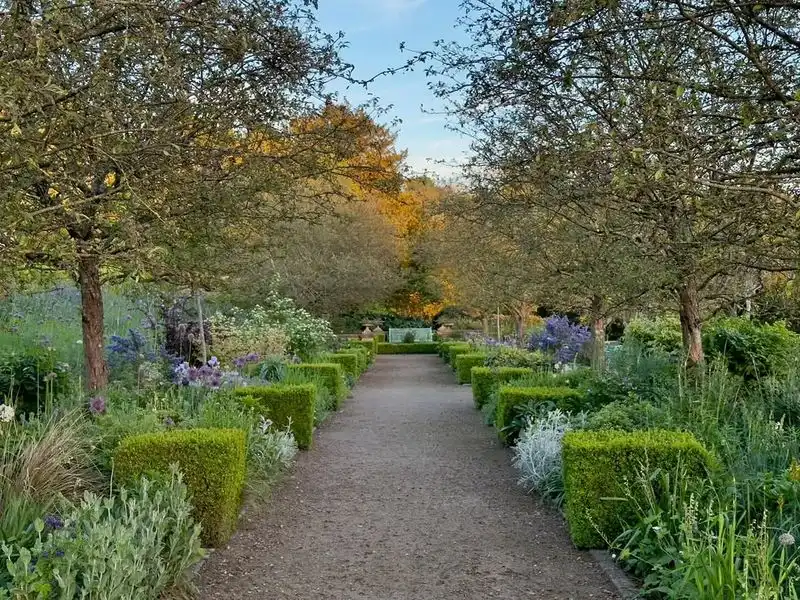
Paths are more than mere tracks; they lead journeys through a garden’s narrative. In European landscapes, pathways often guide visitors to focal points like statues or fountains.
Simple materials such as gravel or stone provide a classic look. Line them with lavender or roses for added color and fragrance.
Formal pathways not only create flow but also frame the garden’s beauty. They invite exploration and delight, each step revealing new vistas and hidden corners.
Build your own path, and let it tell your garden’s story.
Water Features
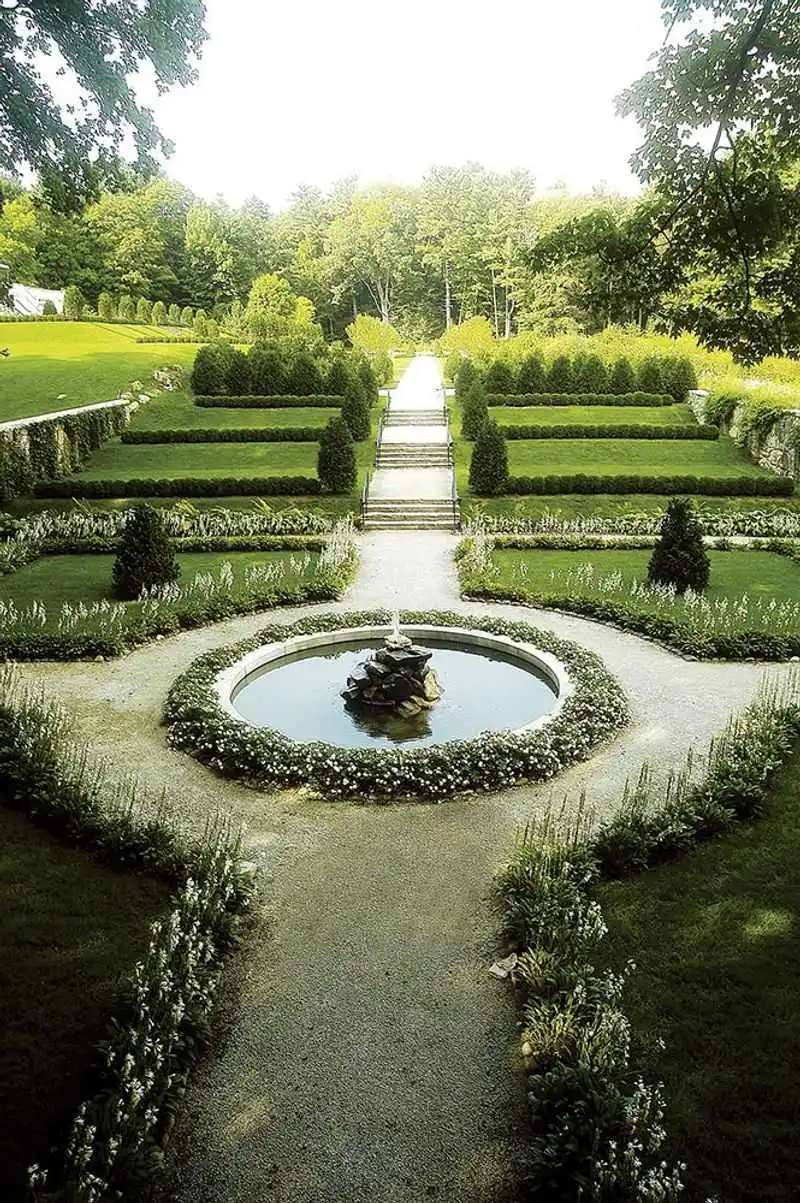
Water’s gentle murmur adds tranquility and movement, vital to European gardens. From grand fountains to simple ponds, water features captivate the senses.
Imagine sunlight dancing on a fountain’s surface or ripples spreading across a pond. Even a small garden can accommodate a water feature, creating a focal point that attracts both eyes and wildlife.
Consider adding a stone fountain or a reflecting pool. The sound of water brings a soothing element, turning a garden into a peaceful retreat.
Ornamental Statues

Statues in gardens serve as both decoration and conversation starters. These elegant figures bring history and culture to life, often depicting mythological or historical subjects.
Whether it’s a regal cherub or a noble goddess, statues offer a sense of grandeur. Place them amidst greenery or at the end of a pathway to draw the eye.
Adding a statue to your garden can evoke a timeless charm, connecting you to the stories and artistry of the past.
Parterres
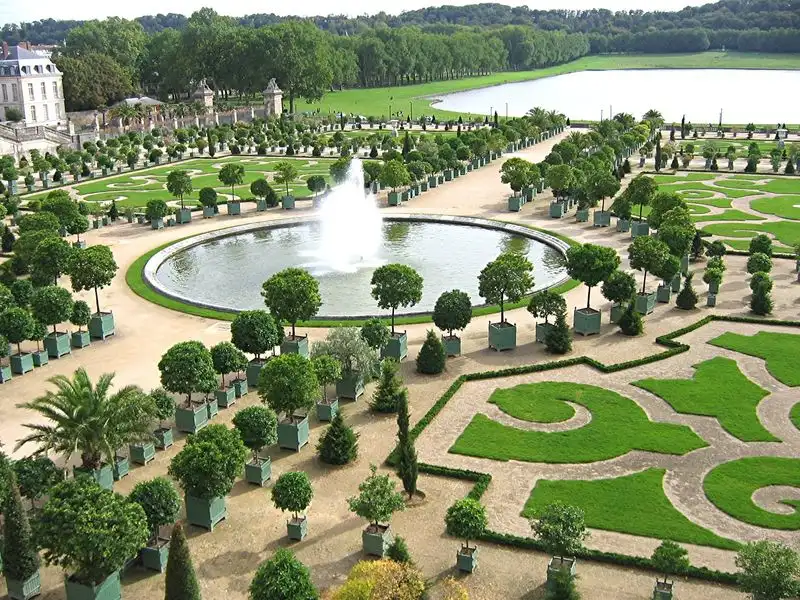
Parterres are intricate, geometric garden beds that create visual intrigue and structure. These meticulously designed plots often feature symmetrical patterns filled with colorful flowers or gravel.
Think of them as living tapestries that change with the seasons. Creating a parterre might seem complex, but starting small can yield stunning results.
Use contrasting colors and textures to enhance visual interest. Parterres add elegance and sophistication, instantly elevating any garden space with their artistic flair.
Boxwood Borders
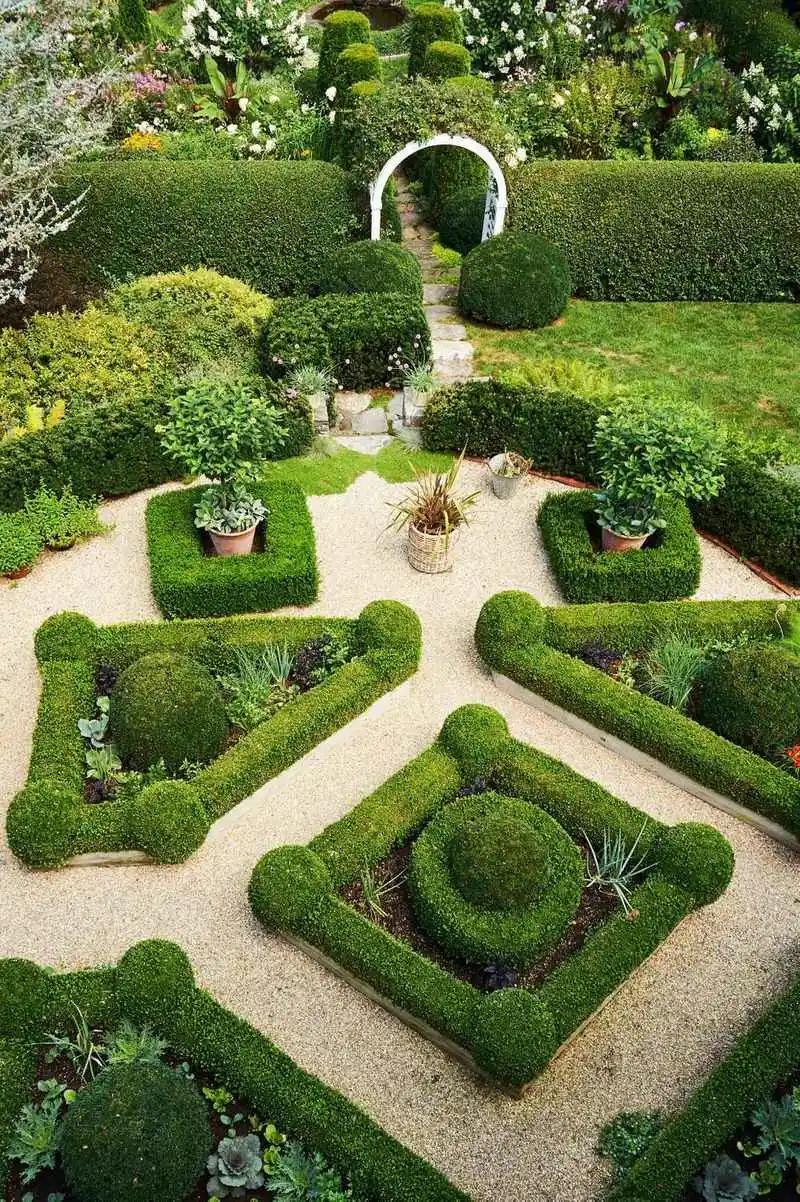
Boxwood borders define spaces with precision and elegance. These evergreen shrubs are a staple in European gardens, known for their dense foliage and versatility.
Perfect for creating tidy lines and partitions, boxwoods can be shaped to fit any garden design. Plant them along pathways or around flower beds to add structure.
Boxwood borders not only frame your garden’s features but also provide a rich green backdrop for vibrant blooms. They’re a timeless addition that enhances any landscape.
Trellised Vines
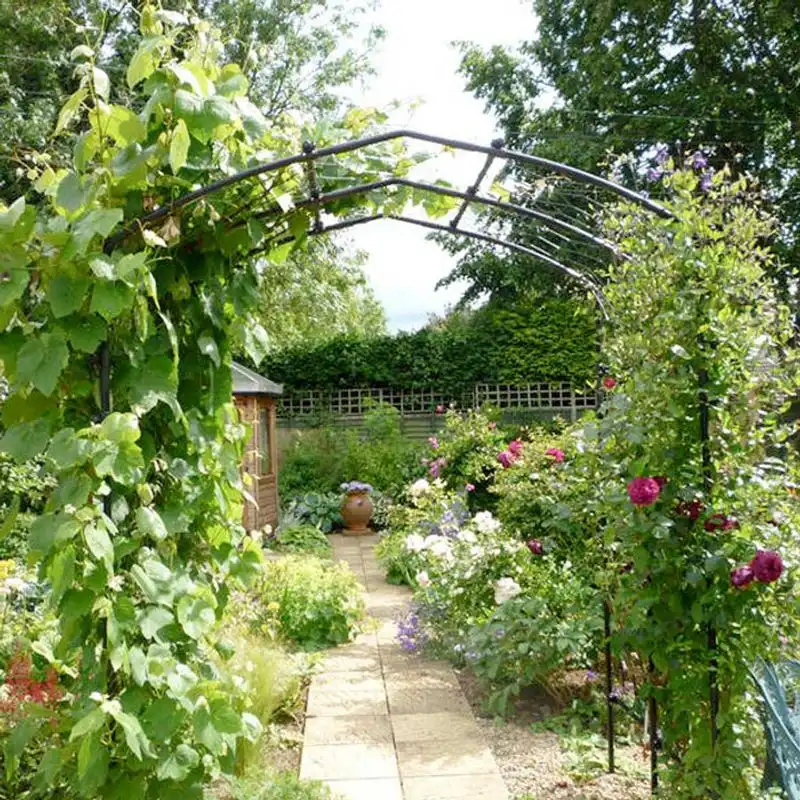
Trellised vines bring vertical interest to gardens, transforming bland walls into lush canvases. Climbing plants like ivy or wisteria weave through the structure, creating cascading greenery.
Imagine a pergola draped in fragrant blossoms or a wall covered in rich foliage. These vines offer shade and privacy, making outdoor spaces more intimate.
By training vines on trellises, you add height and dimension, drawing the eye upwards and enhancing the garden’s allure.
Knot Gardens
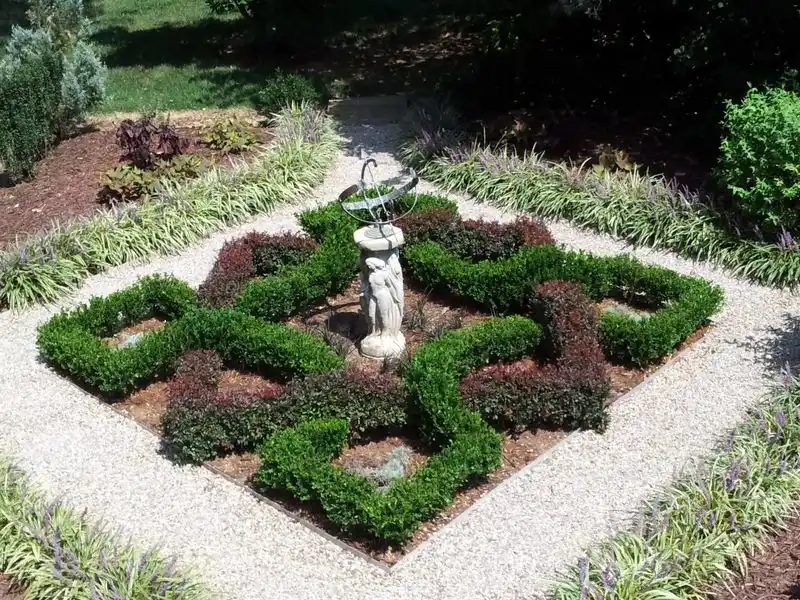
Knot gardens weave nature with art, creating intricate patterns from low hedges. This garden style, popular in the Renaissance, uses interlacing designs to showcase symmetry and precision.
Plant herbs or small flowering plants within the patterns for added color and fragrance. Starting a knot garden may require patience, but the reward is a living masterpiece.
Knot gardens blend elegance and tradition, lending a sophisticated touch to any landscape.
Sundials
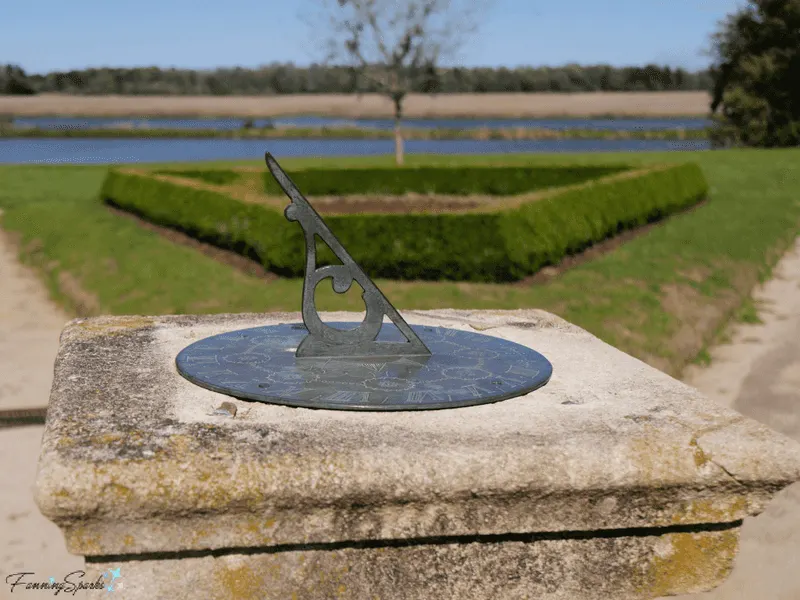
Sundials merge function with aesthetics, blending timekeeping with garden charm. These sculptural features, often crafted from stone or metal, add historical depth.
Positioned to catch the sun’s path, they cast shadows that mark time’s passage. Place a sundial in a sunny spot, surrounded by flowers or herbs.
Not only does it serve as a focal point, but it also invites contemplation, a nod to gardens’ reflective nature. A sundial brings timeless beauty to any garden.
Fruit Espaliers
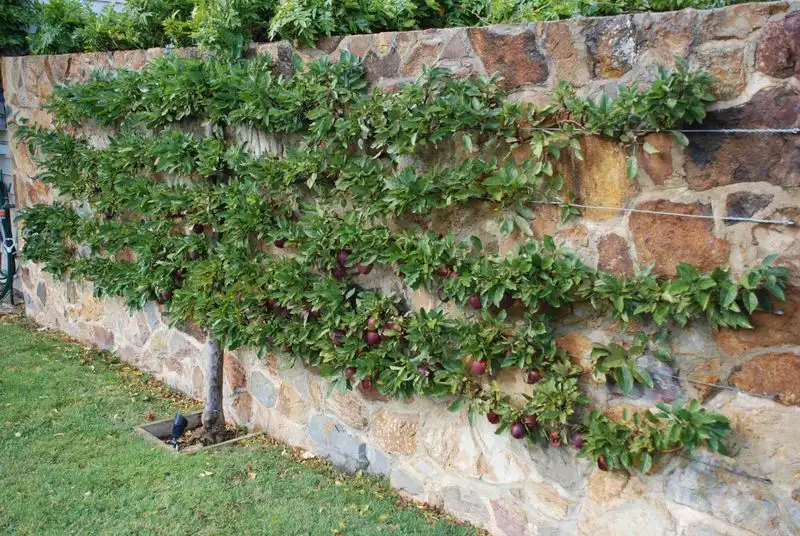
Espaliers transform ordinary fruit trees into works of art, training branches flat against walls or trellises. This technique not only saves space but also enhances fruit production.
Imagine a wall adorned with apples or pears, easy to harvest and beautiful to behold. Espaliers require careful pruning and guidance, but the result is both decorative and productive.
These living sculptures marry utility with aesthetics, offering a unique way to enjoy fresh fruit and greenery.
Ornamental Ironwork
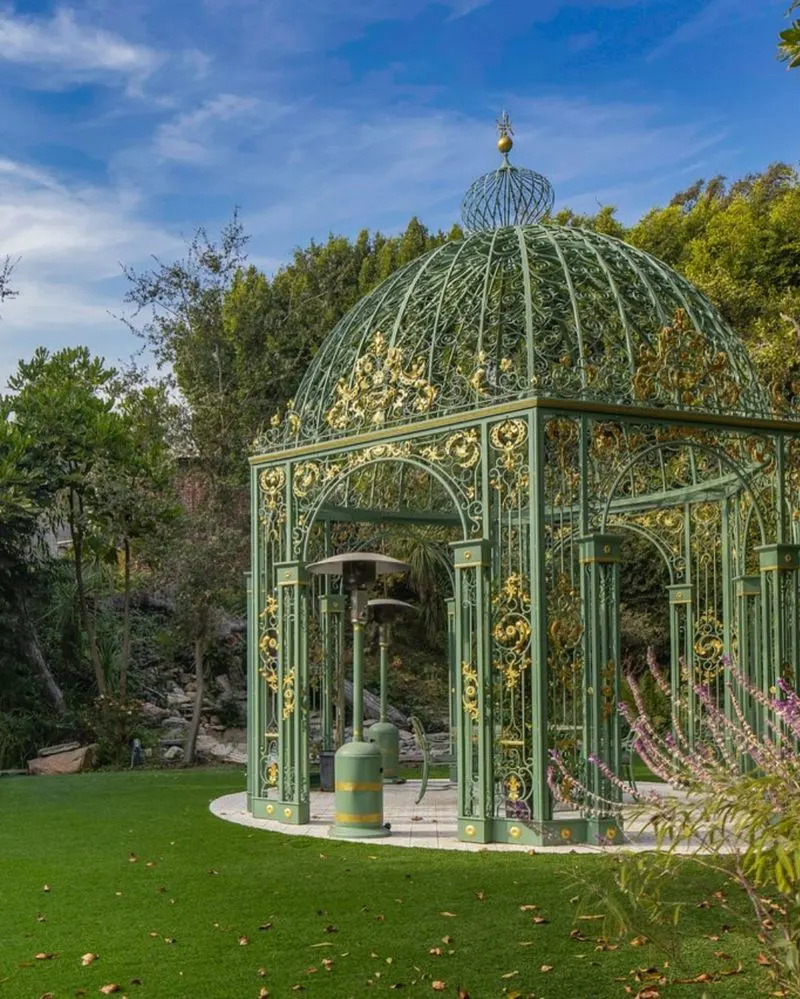
Ironwork adds elegance and detail, from gates to railings. In European gardens, these elements frame scenes and guide visitors.
Wrought iron’s durability and intricate designs create a sense of sophistication. Install a decorative gate or trellis to introduce this timeless feature.
Ironwork can also provide support for climbing plants, blending beauty with function. It complements any garden style, offering a classic touch that endures through time.
Terraced Planting
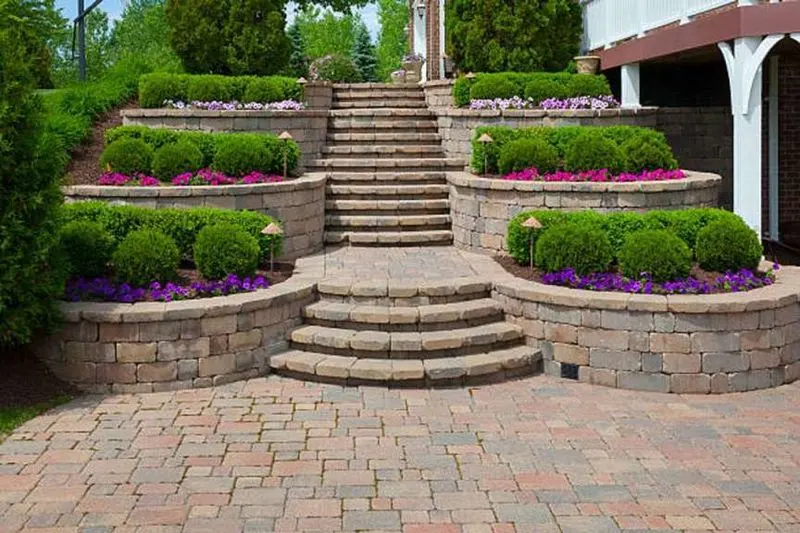
Terraced gardens turn slopes into layered beauty, maximizing space and adding dimension. Stone walls support each level, creating distinct planting areas.
This method not only controls erosion but also allows for diverse plantings. Picture a hillside transformed into a series of lush terraces, each with its own character.
Terracing offers the opportunity to experiment with different plants, textures, and colors, crafting a garden that’s rich in variety and interest.
Pleached Avenues
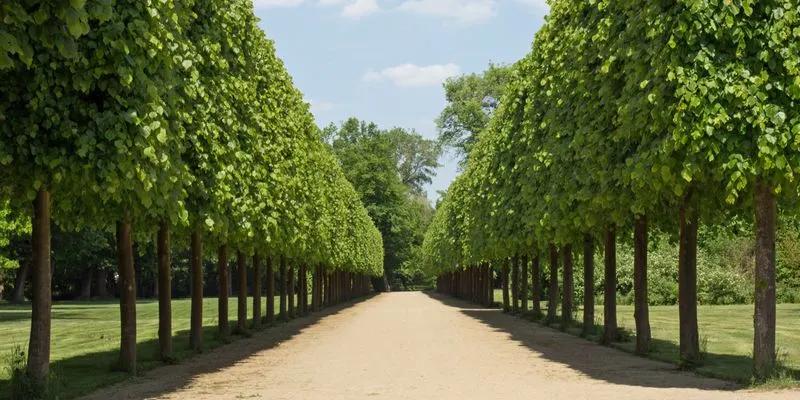
Pleaching weaves tree branches across frames, forming living walls. This technique creates shaded avenues or privacy screens.
Trees like lime or hornbeam are often used, their branches trained into straight lines. Walking under a pleached avenue feels like entering a green cathedral, the canopy offering dappled light and shelter.
Pleaching provides both beauty and function, a testament to garden craftsmanship. It turns ordinary paths into enchanted passages, inviting you to wander and wonder.
Herbaceous Borders
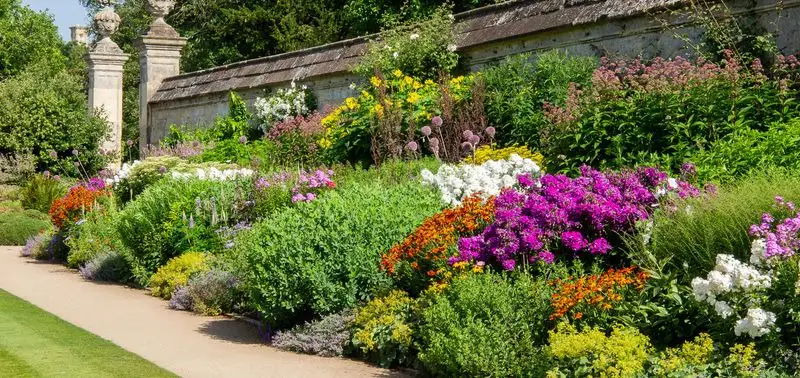
Herbaceous borders overflow with seasonal color, showcasing a variety of flowers and foliage. These borders are dynamic, changing with the seasons to offer continual interest.
Think of a riot of colors, from delphiniums to foxgloves, creating a tapestry of blooms. Planting in layers can add depth and texture, making the border a focal point.
Herbaceous borders invite a closer look, drawing you into their vibrant world, a celebration of nature’s beauty and diversity.

